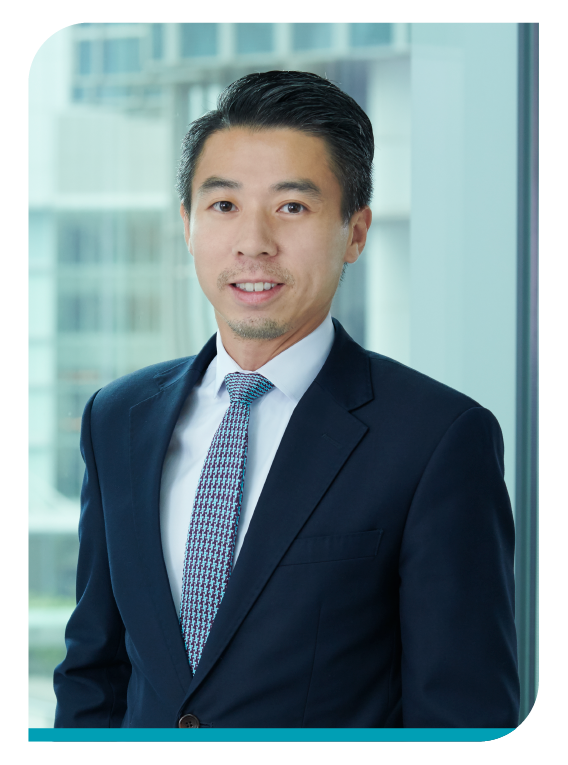A resurgent dividend story in Asia
22-03-2021
The Asia Pacific region has historically provided some of the highest dividend paying stocks. However, with much of the region’s markets heavily driven by “growth” and a focus on price returns, the dividend component may be overlooked from a total return basis. We asked Frank Tsui, Senior Fund Manager & Head of ESG Investment, what his expectations are for dividend payouts in the region and why an investor may expect stable Asian dividend growth to provide attractive overall returns versus other regions in the world.
Q: What has been the historical reason for finding higher dividends in Asia and what do you foresee for 2021?
First, why investing in equity dividend makes sense. The dividend-paying element in a stock points us to quality – a synonym of balance sheet resilience and stability in operations. Empirical data shows that a high dividend strategy provides a better risk-return profile. Returns are delivered under a lower volatility rather consistently. Moreover, the regular income stream in the form of dividends is also a manifestation of downside protection. A good reference is the Global Financial Crisis in 2008-09 when a roughly 15% drawdown1 was buffered in high-yielding stocks as compared with the plunge posted in the broader benchmark index (Respective indices: the MSCI AC Asia ex Japan High Dividend Yield Index and MSCI AC Asia ex Japan Index).
Equity dividend is great, but in Asia ex Japan is better. Historically, dividend is a component in Asian equity’s total returns that cannot be ignored. In the MSCI Asia AC Asia ex Japan Index, for example – dividend takes up 40% of the index’s total return in the past ten years1. Similarly, in the MSCI China Index, the dividend return amounts to 36% over the same period1.
Other financial metrics, such as free cash flow and gearing ratio of Asian corporates also prove their strong balance sheet status and outshine that of companies elsewhere. On average, the free cash flow level of Asian companies could cover more than 1x of dividend and buyback2. They also run a net debt to equity ratio of 34% on average, which indicates that they derive merely one-third of its capital financing from debt2. This is compared to U.S. and European companies commanding more than two-thirds of financing from debt.
Q: The recovery progress looks promising across economies. What would be the implications for Asian equity dividends?
The recovery expectation is the mainstay for Asian equity dividend strategies in 2021, supported by resumption and an increase in equity dividends. The case would be of contrast to 2020, where business confidence was ravaged, leading to the worst relative performing year since 19991. Indeed, COVID remains pervasive, but the world has begun racing to vaccinate its way out of the public health crisis. This shall unlock recovery progress. Not only would business operations return to normalcy, it is expected that corporate dividends would normalize by payout resumption and increase.
Apart from recovery, the rate environment continues to be constructive for this strategy in 2021. Although the inflation and tapering expectation quickly formed at the beginning of 2021, the Fed fund rate is expected to stand at a 10-year low level, which means the opportunity cost of investing in higher-dividend stocks is not material. This backdrop shall continue to attract flows to quality dividend-paying assets, Asian high dividend stocks included.
We believe Asia’s case of a solid recovery is at play and would justify our cautious optimism that the region shall fare better in their financial health and corporates should score outstanding earnings growth through 2021, with the market estimates now standing at 25%3.
Q: Dividend yield is one thing, while dividend growth is a different matter altogether. How do we differentiate between the two and ensure the companies we invest in are able to account for both?
Equity dividend strategy works well in Asia by capturing three major engines: i) Stable high yield, ii) Cyclical high yield, iii) Structural growth stocks. A dynamic approach to constantly maintaining a favorable mix is key to ride through cycles. As such, we are ensured that the portfolio captures the potential gains from the emerging leaders of the future (which is bountiful in Asia) while receiving relatively stable streams of income.
Stable high yield comes from companies with revenue less dependent on the economic cycle. They tend to be mature businesses with leading market positions and sit on secured earnings sources such as longer-term contracts. Cyclical high yield, as its name suggests, draws considerable dividend yield when the cycle enters a trough stage. Compared to their depressed share price, the dividend yield could be appealing and re-rating is likely for quality companies as they break out from the trough cycle. In contrast, Structural growth stocks do not necessarily carry dividend-paying potentials, but most of them situated in secular growth areas with development unfolding in decades of time. Such candidates are scattered across Asia and varied across sectors such as the internet and innovative technology.
Q: Does this play into our approach towards ESG, specifically our focus on corporate governance?
In our view, corporate governance equates to a company’s discipline in financial and people management. In the same vein, in a company operated under less stringent governance, concerns would grow over cash management and other non-financial aspects. As such, potential risks follow. We are cognizant of the influence of governance quality that weighs on a dividend strategy. To address this in our process, a set of proprietary scorecards enables us to consider ESG factors in a transparent and structured way. Into the specifics, there are several key scopes that we scale before making an investment: i) board composition, independence and diversity, ii) company ownership and iii) cash holdings.
Good cash management can be a direct pointer to dividend potential. After all, sufficient and sustainable free cash flow is the prerequisite to afford the regular payouts. The board’s willingness is as critical – whether they are inclined to enhance shareholders’ value, reward their shareholders over time, and carefully manage their payout policies from a longer perspective.
Q: Australia and Japan have normally been the highest dividend-paying markets, but China has caught up. While its equity market has historically been retail/ sentiment-driven and more volatile compared to other markets, does the more stable dividend component of China equity returns make it more attractive from a regional and global basis?
Indeed, compared to mature markets, China equity dividend play may not be at the front of investors’ minds. But, we see growing interests in China’s exciting mix of dividend stories, with sectors ranging from the consumption sector, such as white goods makers to banks and to property developers.
Like applying to other investment styles, we are selective on what we buy. That means we do not place our convictions solely on the percentage yield – In another word, never detach our picks from fundamentals.
Taking Chinese banks as an example. We maintain an underweight position in this sector despite a respectful 6-7% dividend yield and a low price-to-book ratio. These mainland banks run under state control and their operations are likened to “national services,” which could put constraints on asset quality management. Circling back the cash management considerations in the previous question, we raise concerns over banks’ profitability and share price upside, albeit an attractive yield offered.
Read more:
Source:
- Bloomberg data
- FactSet, Jefferies, December 2020. Excluding Financials.
- FactSet, MSCI, Goldman Sachs Global Investment Research, November 2020
Disclaimer: The views expressed are the views of Value Partners Hong Kong Limited only and are subject to change based on market and other conditions. The information provided does not constitute investment advice and it should not be relied on as such. All material has been obtained from sources believed to be reliable as of the date of presentation, but its accuracy is not guaranteed. This material contains certain statements that may be deemed forward-looking statements. Please note that any such statements are not guarantees of any future performance and actual results or developments may differ materially from those projected. This commentary has not been reviewed by the Securities and Futures Commission. Issuer: Value Partners Hong Kong Limited






